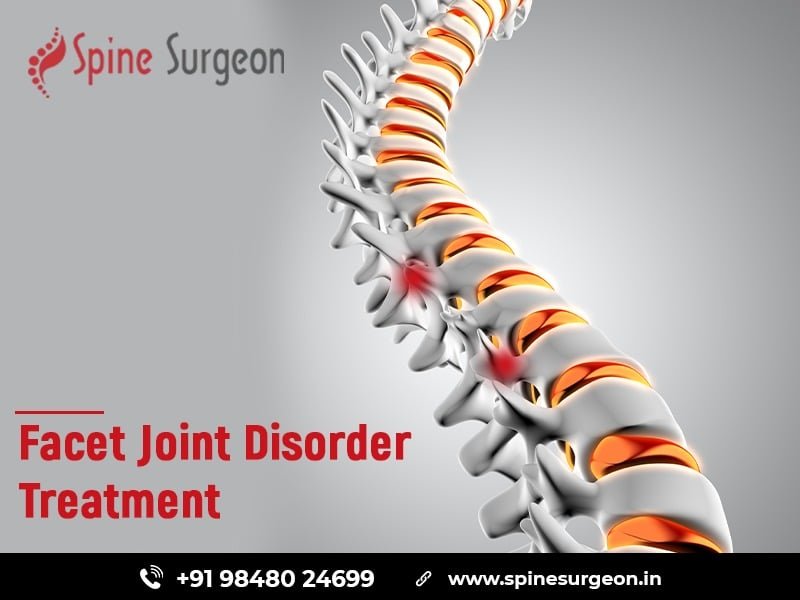A vertebra column is primarily composed of three components:
- The spinal cord, which passes through the vertebral body
- the intervertebral discs, which are located between each vertebra of the spine;
- The facet joints are the connections between the spinal bones, and they run along the back of the spine. They help with spinal motions like bending and twisting the torso.
The facet joints are responsible for bending and twisting the spine to a certain degree without over-stretching or twisting the spine.
As with other joints in the body, the facet joints retain a layer of protective cartilage that protects the joint, allowing safe and smooth movement of the spine. The cartilage may be broken down over time or damaged due to degenerative conditions. When the cartilage becomes damaged, you may experience a variety of symptoms, ranging from slight tingling to severe back pain, which sometimes radiates into the arms or legs.
The following are some of the common causes of facet joint disorder:
Chronic Strain – This is one of the primary causes of facet joint disorder that happens due to chronic twisting or bending of the back, especially in elderly people. This is more commonly developed in people whose work constantly involves using their spine like construction workers lifting heavy weights, nurses, and athletes.
Arthritis – this is another major cause of facet joint disorder, especially Rheumatoid Arthritis (RA), which affects many joints in the body. It can damage the protective cartilage of the facet joint, leading to back pain.
Spondylolisthesis – This spinal problem occurs when any of the vertebrae slips out of alignment. This commonly happens due to accidents or the impact of chronic strain.
Obesity – the excess weight puts excess pressure on our skeletal structure, especially on the spine column, which may cause our joints to wear out more quickly.
Symptoms of Facet Joint Disorder
Pain is the main symptom that occurs with facial joint disorder (FJD). This pain can be dull and localized, and in more severe cases, it can be sharp and sometimes radiate down into lower or upper limbs. As the spinal nerves pass through the facet joints, the development of bone spurs or degeneration of the facet joints might result in pinched nerves.
Pain may be experienced a few times a month or less, but the tenderness will be more consistent, which is associated with muscular tightness around the affected joints.
The pain levels vary depending on the direction of your movement. The intensity of pain increases when you bend backwards while bending at the waist may completely relieve the pain. Certain sitting positions aggregate your pain as well.
Pain may radiate to different body parts, especially the backside of the body, depending on the location of the damaged facet joint. For example, if the facet joints are damaged in the lumbar (lower) spine, pain may radiate down the buttocks and into the back of the lower limbs. If the facet joints are damaged in the cervical (neck) portion of the spine, pain may radiate into the shoulders, and sometimes it migrates down the arms and into the fingertips.
Treatments for Facet Joint Disorder
Diagnosis is the key to treating Facet Joint Disorder (FJD) because it appears to be similar to other spine problems like slipped discs. The following techniques are used to determine if you have any problems with facet joints: your medical history, a physical examination, X-rays, CT scans, MRIs, and occasionally facet joint injections are also used.
If you are diagnosed with FJD, non-surgical treatments are always the first line of treatment. A spine doctor would suggest any of these treatments: physical therapy, acupuncture, a regimen of exercise and stretching, and pain-relieving medications. Some major changes in lifestyle, like losing extra weight, and quitting smoking, and drinking, can also fix certain problems with facet joints. In cases of acute discomfort at the site of facet joint deterioration, drug injections are directly injected into the damaged site to relieve discomfort.
Dr. Surya Prakash one of the best spine surgeons in Hyderabad, says that surgery will be the last resort of treatment in severe cases of facet joint disorders. The following are the common surgical techniques used:
- Radiofrequency Ablation
- Facet Joint Decompression (Laminectomy)
- Facet Joint Fusion
- Endoscopic Facet Rhizotomy
- Intradiscal Electrothermal Therapy (IDET) in specific cases
- Facet Joint Replacement
However, the type of treatment that suits your condition depends on many factors and will be decided by the spine surgeon. For more detailed information Consult Dr. Surya Prakash, he can help you identify the best treatment option to relieve pain and other symptoms. He has more than 20 years of experience as a spine surgeon and is an expert in resolving facet joint pain.








